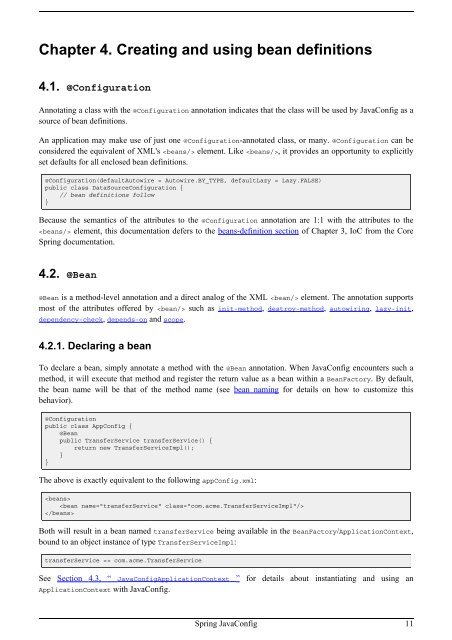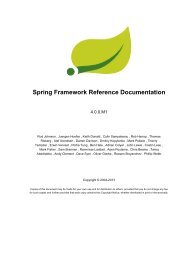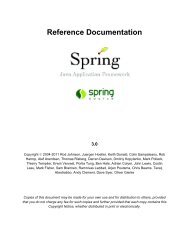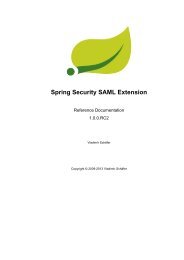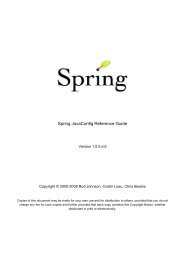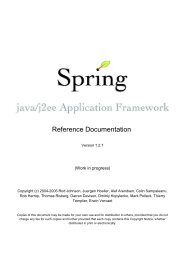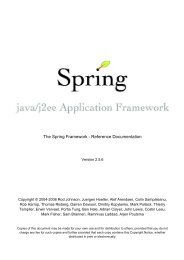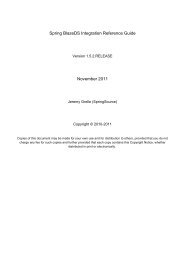Spring JavaConfig Reference Guide - Spring Web Services - Parent ...
Spring JavaConfig Reference Guide - Spring Web Services - Parent ...
Spring JavaConfig Reference Guide - Spring Web Services - Parent ...
Create successful ePaper yourself
Turn your PDF publications into a flip-book with our unique Google optimized e-Paper software.
Chapter 4. Creating and using bean definitions4.1. @ConfigurationAnnotating a class with the @Configuration annotation indicates that the class will be used by <strong>JavaConfig</strong> as asource of bean definitions.An application may make use of just one @Configuration-annotated class, or many. @Configuration can beconsidered the equivalent of XML's element. Like , it provides an opportunity to explicitlyset defaults for all enclosed bean definitions.@Configuration(defaultAutowire = Autowire.BY_TYPE, defaultLazy = Lazy.FALSE)public class DataSourceConfiguration {// bean definitions follow}Because the semantics of the attributes to the @Configuration annotation are 1:1 with the attributes to the element, this documentation defers to the beans-definition section of Chapter 3, IoC from the Core<strong>Spring</strong> documentation.4.2. @Bean@Bean is a method-level annotation and a direct analog of the XML element. The annotation supportsmost of the attributes offered by such as init-method, destroy-method, autowiring, lazy-init,dependency-check, depends-on and scope.4.2.1. Declaring a beanTo declare a bean, simply annotate a method with the @Bean annotation. When <strong>JavaConfig</strong> encounters such amethod, it will execute that method and register the return value as a bean within a BeanFactory. By default,the bean name will be that of the method name (see bean naming for details on how to customize thisbehavior).@Configurationpublic class AppConfig {@Beanpublic TransferService transferService() {return new TransferServiceImpl();}}The above is exactly equivalent to the following appConfig.xml:Both will result in a bean named transferService being available in the BeanFactory/ApplicationContext,bound to an object instance of type TransferServiceImpl:transferService => com.acme.TransferServiceSee Section 4.3, “ <strong>JavaConfig</strong>ApplicationContext ” for details about instantiating and using anApplicationContext with <strong>JavaConfig</strong>.<strong>Spring</strong> <strong>JavaConfig</strong> 11


